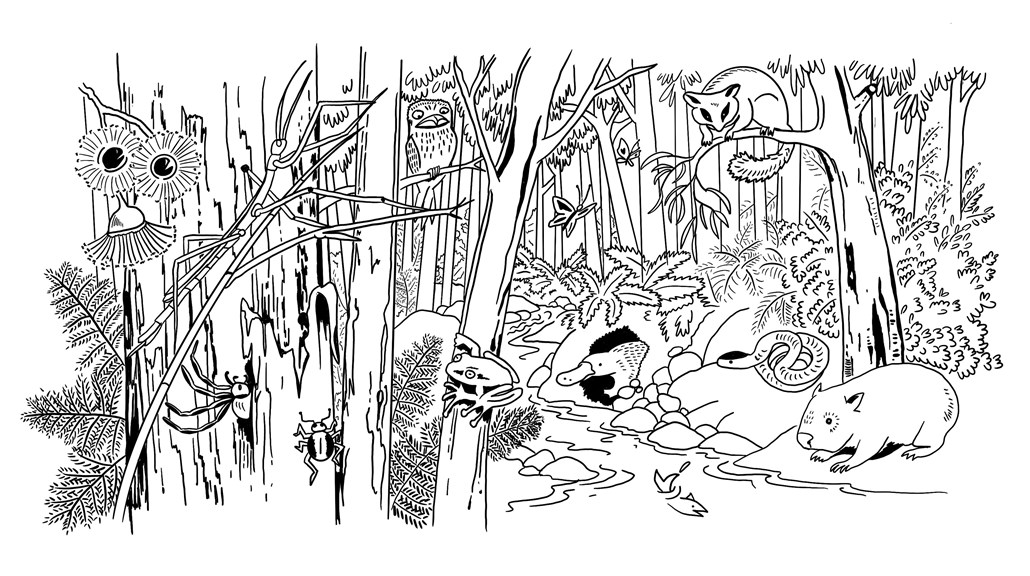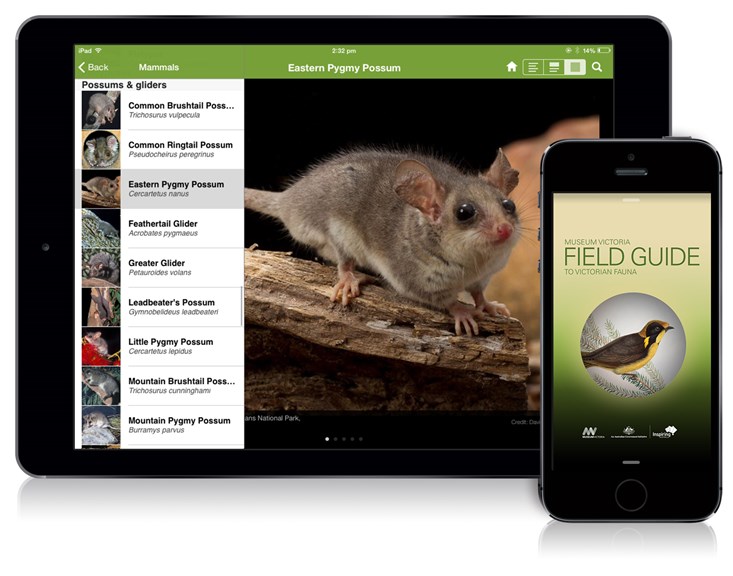Forests and their secrets
Suitable for Year Levels 3–8
Activity 1
Connect with nature mindfully
It’s important to stay connected to nature. Find a quiet and comfortable place in your home to listen closely to our relaxing Mindfulness Meditation video. This video goes for 18 minutes and gives you easy to follow instructions to help you focus, connect and reflect on the small and big things in our world that are important.
If you find it a bit tricky to concentrate and be mindful for the whole video watch little sections each day until you feel comfortable following the whole 18 minutes:
- On day one watch until 5 minutes 44 seconds
- On day two watch until 8 minutes 18 seconds
- On day three watch until 11 minutes 43 seconds
- On day four watch the full video
Activity 2
Take a virtual tour of the Forest Secrets Gallery
Take a virtual tour of our Forest Secrets Gallery and explore by clicking the arrows on the ground to move forward. You can also click and drag your mouse to look to the sides, up and down.
- Write a list of everything that you see as you look around and explore the gallery. Beside each entry write if it was made by people or grown from nature. Take a moment to think about the relationship between the things you have listed, how are they connected?
- When museum experts conduct biodiversity scans and research in forests across Victoria they take photos and draw the environment so they can refer to their notes later on. Sketch a section of the forest in your work book that you find appealing or captures your interest.
Activity 3
Become a museum classification expert
Imagine you have recently joined the museum on a biodiversity scan to investigate the types of animals found in a Mountain Ash forest. The sketch below shows the animals you observed on your recent visit. You bring your sketch back to the museum and now have to classify and sort the animals into categories.
- Firstly, name all the animals in this sketch. These are all commonly found species of animal in Australia.
- Your job requires you to sort the animals into groups based on their physical structure, including their body parts. For example, you might count the number of limbs each animal has. What are three other features or body parts you could use to sort animals into groups?
- You have decided that you also want to separate animals that have a backbone from those that do not. Using the animals in the forest sketch, draw a table in your work book with two columns. Label the columns:
- Animals with a backbone (vertebrate)
- Animals without a backbone (invertebrate)
- You realise that you can develop a system to further sort the animals which have a backbone based on their body covering. Draw a table in your work book with four columns. Label the columns:
- Fur/hair
- Feathers
- Moist skin
- Scales
- Are there any other ways you can sort different animals and species? Do some research into the ways that scientists and museum experts sort and classify different animals. Create a poster or a video presentation to share your research.
Activity 4
Write a food web story
A forest is a community. It consists of many plants and animals living together and interacting. The food web below shows the feeding relationships between forest plants and animals. Using this food web, write a short story to explain how forest plants and animals are interconnected. Try to include as many of the following terms as you can (if you don’t know what they mean, search online for a definition):
- Habitat
- Sunlight
- Competition
- Producer
- Consumer
- Predator
- Prey
- Scavenger
- Carnivore
- Herbivore
- Mammal
- Invertebrate
Activity 5
Explore the animals near your home
Download the Museums Victoria Field Guide App on a tablet or phone. Use the app to explore the different animals in Victoria. Make sure you check out the animal calls and distribution map so you can keep an ear and eye out for specific animals that might be in your backyard.
Your questions answered
Victorian Curriculum Science
Levels 3–4
- Living things can be grouped on the basis of observable features and can be distinguished from non-living things (VCSSU057)
- Different living things have different life cycles and depend on each other and the environment to survive (VCSSU058)
Levels 5–6
- Living things have structural features and adaptations that help them to survive in their environment (VCSSU074)
- The growth and survival of living things are affected by the physical conditions of their environment (VCSSU075)
Levels 7–8
- There are differences within and between groups of organisms; classification helps organise this diversity (VCSSU091)
- Interactions between organisms can be described in terms of food chains and food webs and can be affected by human activity (VCSSU093)


